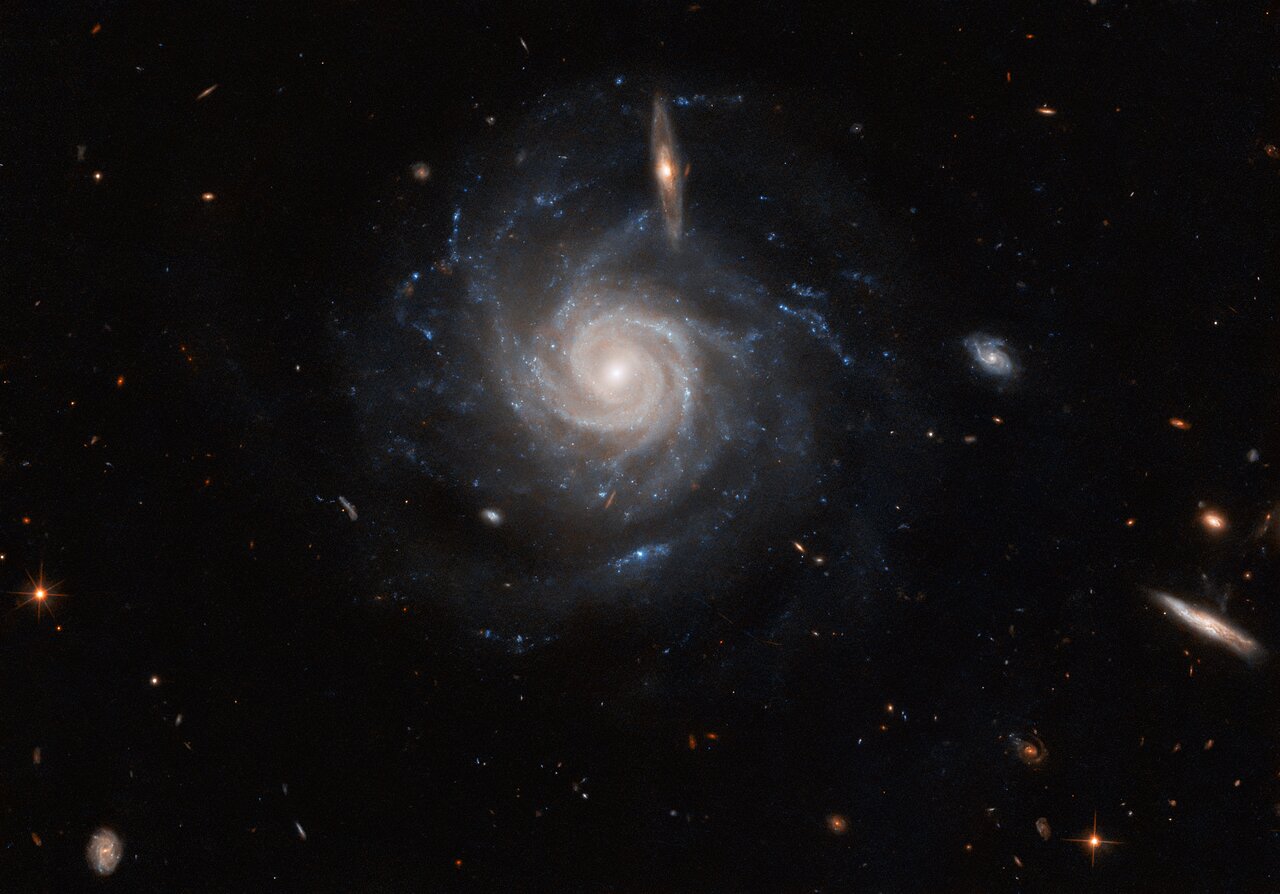Cosmos UGC
The barred spiral galaxy UGC 678 takes centre stage in this image from the NASA/ESA Hubble Space Telescope. The spectacular galaxy lies around 260 million light-years from Earth in the constellation Pisces and is almost face on, allowing its lazily winding spiral arms to stretch across this image. In the foreground, a smaller edge-on galaxy seems to bisect the upper portion of UGC 678. Just like humans, stars have a natural lifecycle; they are born, grow up, and eventually grow old and die. Studying this stellar life cycle — usually referred to as stellar evolution — is an important topic for astronomers. The ends of star lives can be marked by truly spectacular events, including titanic supernova explosions, the creation of unimaginably dense neutron stars, and even the birth of black holes. UGC 678 was recently found to be host to one of these events; in 2020 a robotic telescope scanning the night sky in search of dangerous asteroids discovered evidence of an enormous supernova explosion in the galaxy. Two separate Hubble observations turned to UGC 678 to scour the galaxy in search of the aftermath of its supernova explosion. One team of astronomers used Hubble’s Advanced Camera for Surveys, and the other the Wide Field Camera 3, but both aimed to explore UGC 678 in the hope of unearthing clues to the identity of the star that produced the 2020 supernova. [Image Description: A large spiral galaxy. It has many narrow arms that are tightly-twisted in the centre, but at the ends they point out in different directions. The galaxy’s core glows brightly, while its disc is mostly faint, but with bright blue spots throughout the arms. A few smaller spiral galaxies at varying angles are visible in front, and it is surrounded by other tiny stars and galaxies, on a black background.]
